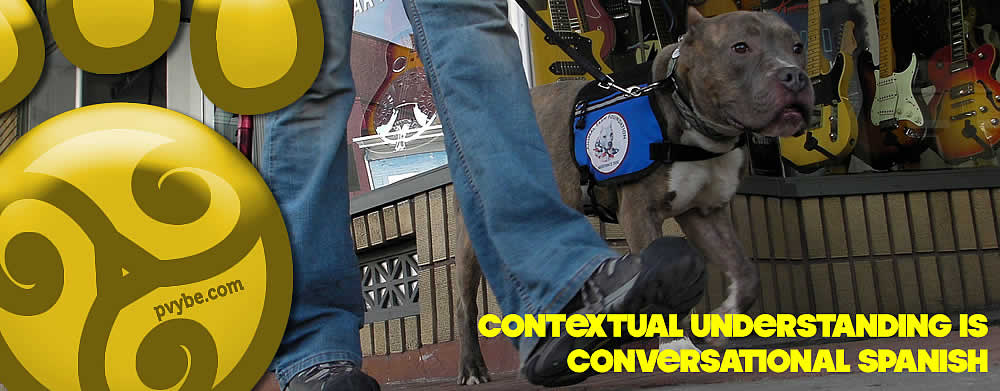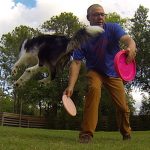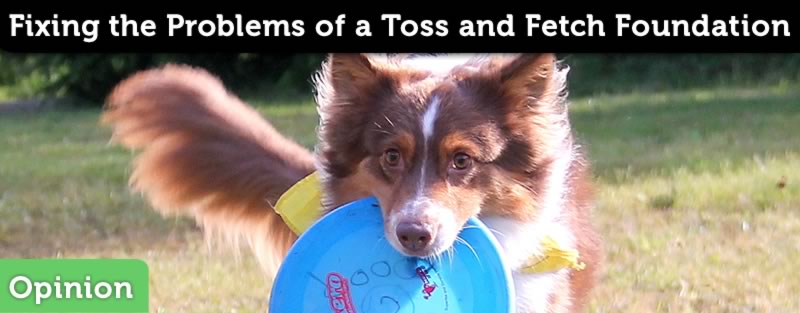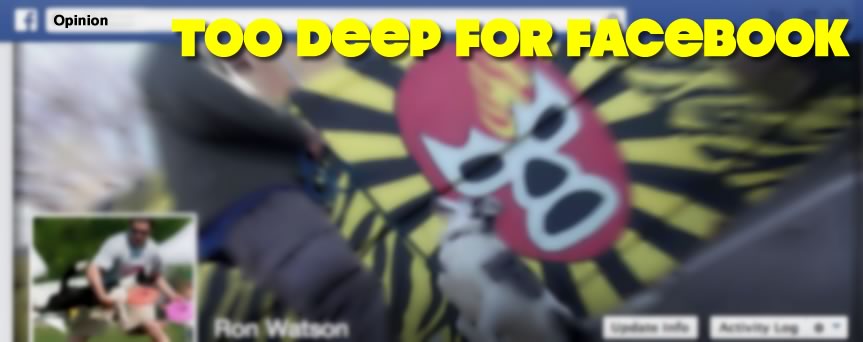
Contextual Understanding is Like Conversational Spanish
Learning a foreign language from a conversational angle is all the rage these days. Instead of focusing on grammar, syntax, and vocabulary, the very concepts that fluency in language is built upon, the teaching is focused on creating competence: pronunciation, common situations, verbal repetition, and vocabulary supplements.
contextual understanding in dog training is like conversational Spanish. it’s all based upon the situation and memorization. find the situation and insert the correct words and you’re good to go.
Quick, Dirty, Dangerous
While conversational Spanish makes it easier to learn with a weak grammatical foundation, and leads to quick, rudimentary function, it doesn’t seek the kind of fluency you need to truly express yourself well, to solve problems, or to communicate clearly in stressful situations.
Conversational Spanish allows you to handle various situations, which is nice, but if you step outside of one of those situations or the communication gets a bit deeper than your limited vocabulary can go you find yourself entirely lost without any idea what is going on.
If all you know is “Dónde está el baño?” how do you ask what a kitchen is? How do you ask who is in the bathroom?
Going beyond your vocabulary usually leads to louder or slower speaking, repetition or perhaps some funky pantomime like charades. You ever play charades with people from another culture? It’s not easy, and it doesn’t usually end with greater understanding. The better you get at faking fluency with great conversational Spanish the more frequently you wind up in conversations you can’t handle.
The idea behind conversational Spanish is that you get enough knowledge for rudimentary conversation but an immersive situation or long term intensive study is required for fluency. Which is OK idea if it you are just learning a language, but you’re not, you are creating and teaching a language to your dog.
Talking Dog
Just like conversational Spanish, learning conversational Dog is not at all like fluent Dog. Speaking conversational Dog means allowing the situation to control the scope of your actions; it’s a contextual understanding of dog training. If you are relying upon your memory of a bunch of situations to provide your roadmap, training tactics, or battle plan you will frequently find yourself more than a few words shy of a complete and coherent answer.
It takes a conceptual understanding of what you are doing to speak Dog fluently. You are just not going to be very articulate if you are only able to respond coherently when the situation sets itself up right.
To speak Dog fluently you need to understand more than the right words for this situation, you need to know how the words, phrases and ideas fit together so you can read the situation and craft an appropriate response, not just some canned phrase.
Stuck in the Situation?
It sounds silly, but I think this happens to a lot of handlers. I think lots of people have this kind of conversational understanding of canine communication and when the situation winds up going beyond their limited vocabulary they wind up waving their arms and playing charades and just confusing the heck out of everybody.
Do you know how to respond in the greeting a guest situation, but when it comes to keeping your dog off your guests later in the evening you draw a blank and wind up waving your hands and communicating who knows what to your dog?
Do you know how to act on the rail trail, but at the pet store, you feel lost? Or, perhaps, “My dog plays politely with balls now but turns into a rabid animal if we tug. I have no idea what to do!”
If the situation dictates your actions instead of your dog’s behavior or your understanding of the criteria, then you are literally stuck in the situation. You can feel trapped and be reduced to the dog trainer’s equivalent of a painful refrain of,”Dónde está el baño?”
Concepts Are Your Behavioral Vocabulary
A few basic concepts:
Attention
Dismissal
Targeting
Release Release has many meanings in disc. Throws and throw variations can be referred to as releases. Sometimes you talk about the dog releasing something, the toy, or the environment, as in to stop... More
Release has many meanings in disc. Throws and throw variations can be referred to as releases. Sometimes you talk about the dog releasing something, the toy, or the environment, as in to stop... More
Orientation
Threshold
Duration
Bite
Drop
make up the vast majority of behaviors. There are probably a bunch more (feel free to add some in comments), but I think you’ll find that this short list can be chained or combined to cover just about anything.
If these concepts are well understood by dog and handler then they become the tools for handling, not just this situation or that situation, but any situation. They are the words we use to solve problems, create masterpieces, and to entertain.
Exercise and expand your behavioral vocabulary and you will be much better at reading and responding to various training situations. You will become more fluent in dog training.
Fluency in Concepts is Competence

My job as a dog trainer is to make you successful, not just now, this moment, and not just for the near term. I may let you out of our studio with a contextual understanding of how to obtain, shape, and manage behavior, but it is my job as a teacher to deliver conceptual understanding to you so you can apply your knowledge to any situation; I need to make you fluent in dog training. Conversational Spanish is not enough.
When you step into a situation think about the concepts required to hit the criteria you need. To handle your dog and teach your dog the appropriate lesson you need to stay above the situation. Think about the concepts and criteria you need to use to express yourself here and now. If you are teaching something, share knowledge, with your dog. If you are helping a nervous dog, use your concepts to build trust. Get away from the situation and choose your words carefully.
You can craft a narrative, write a short story, or even whip up a short and pithy Haiku to fit any audience and any situation if you truly understand the language.
Be fluent.








